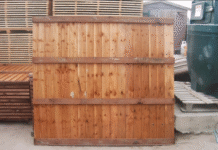When it comes to flooring options, concrete might not be the first material that comes to mind. However, the artistry and practicality of concrete flooring have captured the attention of interior designers, architects, and homeowners alike.
This versatile material offers a unique blend of contemporary charm and industrial ruggedness. As with any choice, though, there are both advantages and drawbacks to consider before committing to concrete as your flooring solution.
The Pros of Concrete Flooring
Durability and Longevity
Concrete floors are renowned for their exceptional durability and longevity. They can withstand heavy foot traffic, furniture movement, and the challenges of daily life without showing signs of wear.
Properly installed and maintained concrete floors can last for decades, making them a cost-effective investment in the long run.
Low Maintenance
Concrete flooring is a breeze to maintain. Regular sweeping and occasional damp mopping are usually sufficient to keep them looking pristine. Unlike carpets that trap dust and allergens, concrete floors do not harbor such particles, making them an excellent choice for individuals with allergies.
Design Versatility
One of the most enticing aspects of concrete flooring is its versatility in design. It can be left as the traditional gray slab, or it can be stained, stamped, or polished to achieve a variety of looks.
Concrete polishing, for instance, can transform a dull surface into a glossy masterpiece, reflecting light and creating an elegant aesthetic.
Thermal Properties
Concrete has impressive thermal mass properties, meaning it can absorb, store, and slowly release heat over time. This characteristic makes concrete floors an excellent choice for passive solar heating, helping to regulate indoor temperatures and reduce energy consumption.
The Cons of Concrete Flooring
Hardness and Discomfort
While the durability of concrete is an asset, its inherent hardness can also be a drawback. Walking or standing on concrete floors for extended periods can lead to discomfort and fatigue.
Area rugs and mats can help alleviate this issue, but it’s important to consider your comfort needs before opting for concrete flooring.
Coldness
The same thermal mass properties that make concrete great for absorbing heat can also make it feel cold, especially in cooler climates. Without proper insulation or radiant heating systems, concrete floors can feel chilly underfoot, which might not be ideal during the winter months.
Prone to Cracks
Concrete is prone to cracking, particularly if not properly installed or maintained. While minor cracks can lend a certain character to the flooring, larger cracks can be a concern both aesthetically and structurally. Uneven floor correction might be necessary to ensure a smooth and level surface.
Professional Installation Required
Achieving the full potential of concrete flooring requires professional installation and finishing. DIY attempts often lead to subpar results, including improper curing, uneven surfaces, and issues with moisture retention.
This is particularly relevant when considering concrete polishing and other intricate treatments.
Making the Decision
Choosing concrete flooring is a decision that should be based on a careful consideration of your specific needs, preferences, and the conditions of your space. If you value durability, design versatility, and low maintenance, concrete could be the perfect choice for you.
However, if you prioritize comfort, warmth, and a soft underfoot experience, you might want to explore other flooring options.









